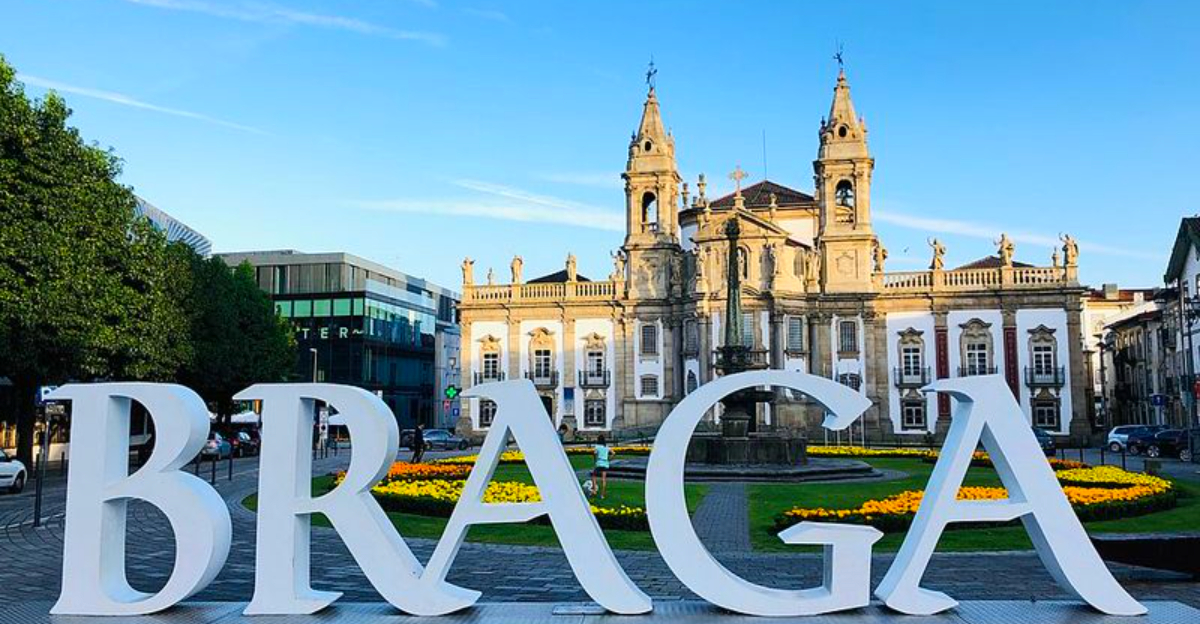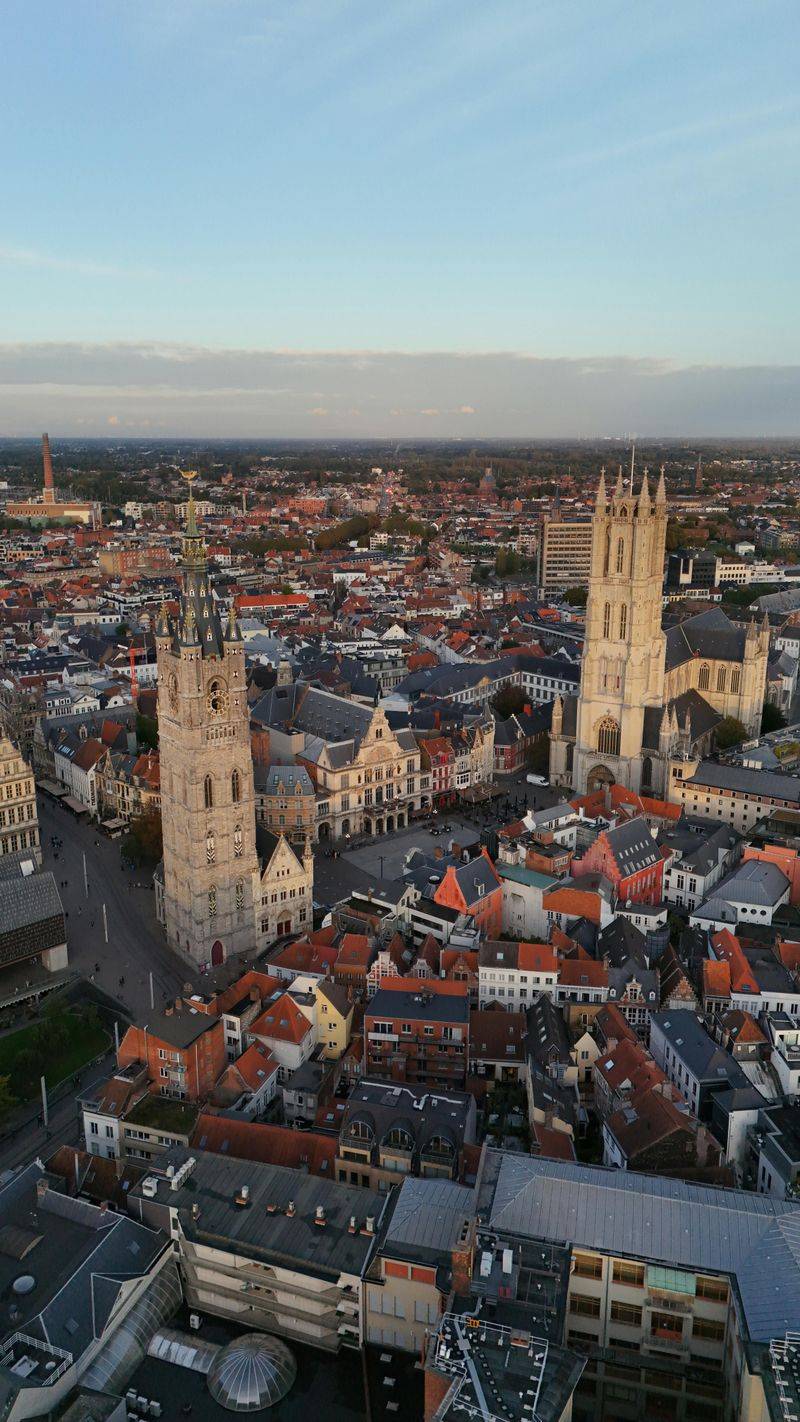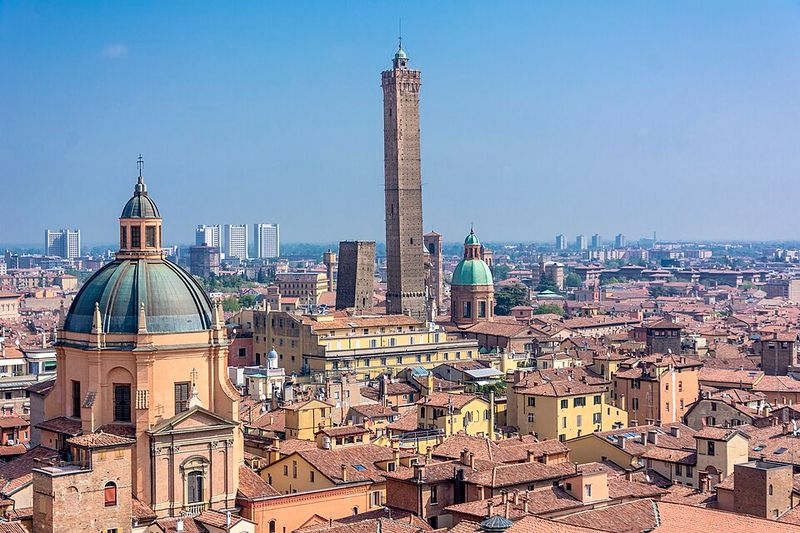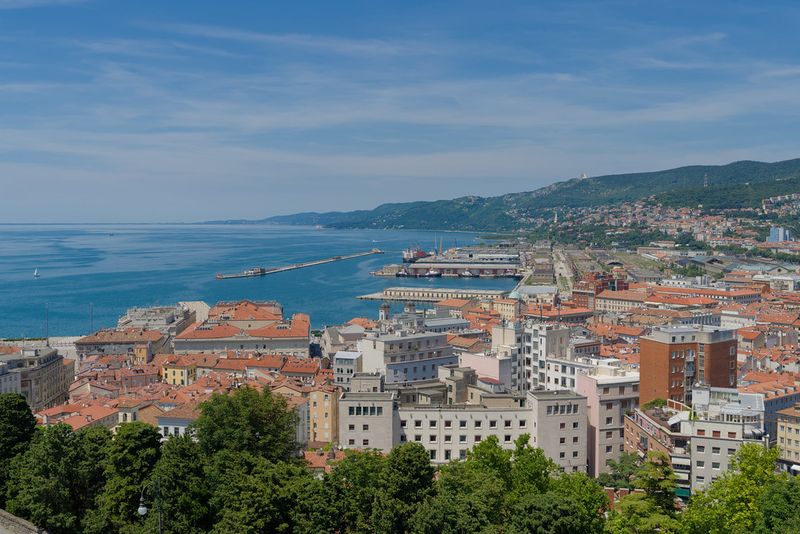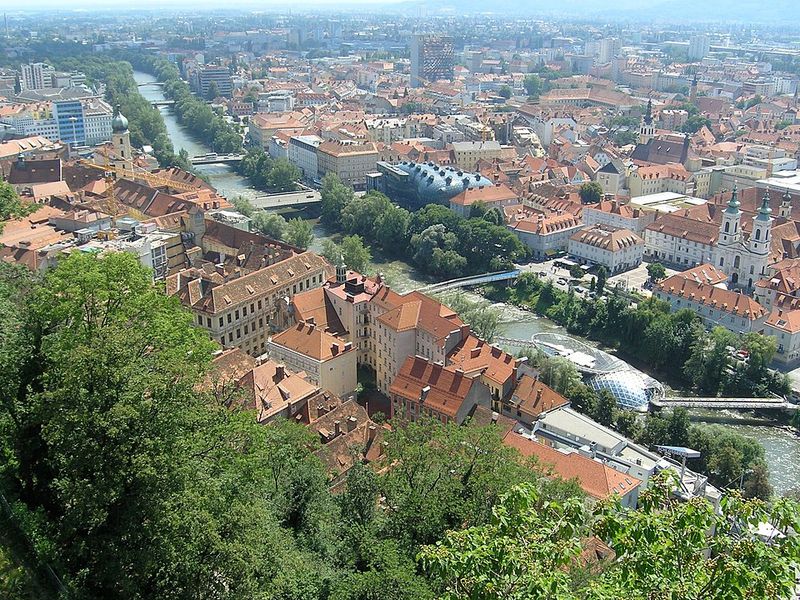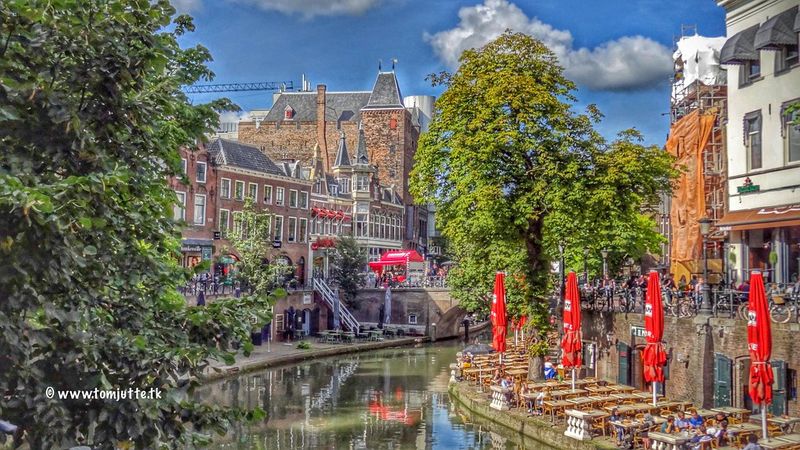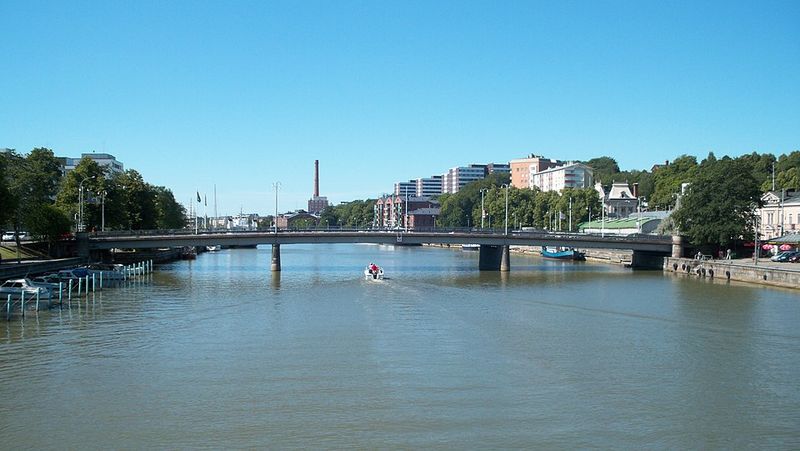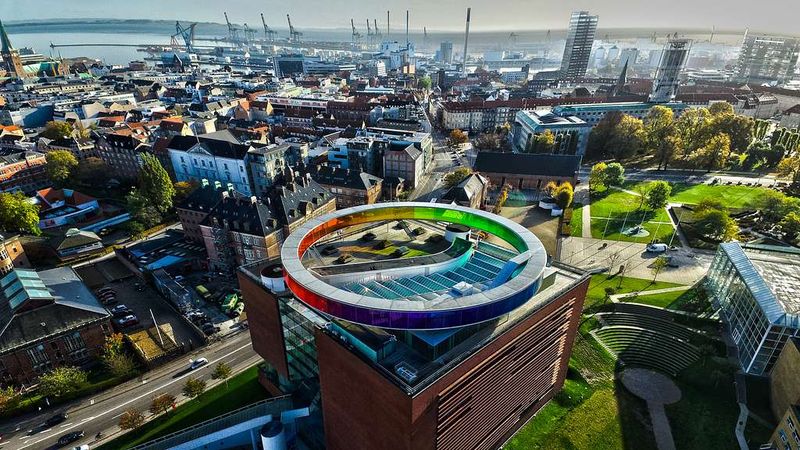Europe is full of famous spots like Paris, Rome, and London, but some of the continent’s most magical places hide in plain sight. Hidden gems across the map offer rich history, stunning architecture, and delicious food without the overwhelming crowds. Ready to discover cities that will steal your heart and make you wonder why you waited so long to visit?
1. Ghent, Belgium
Medieval towers rise above canals while street art splashes color on ancient walls. Ghent mixes old-world charm with a vibrant student energy that keeps the city buzzing day and night.
The Castle of the Counts sits like something from a fairy tale, complete with a moat and stone turrets you can actually explore. Climb to the top for views that stretch across red rooftops and church spires.
Wander along the Graslei and Korenlei quays at sunset when the pastel guild houses glow in the water. The local food scene is surprisingly creative, and you will find cozy cafes tucked into every cobblestone corner.
2. Bologna, Italy
Over 60 kilometers of covered porticos shelter your strolls through this food lover’s paradise. Rain or shine, Bologna invites you to wander without worry beneath its terracotta arches.
The Quadrilatero district feels like stepping into a living museum of Italian cuisine. Vendors arrange wheels of Parmigiano-Reggiano like golden treasures, while fresh tagliatelle hangs like silk curtains in shop windows.
This city earned its nickname “La Grassa” (the fat one) honestly. Sample mortadella where it was born, watch pasta makers roll dough by hand, and join locals who treat every meal like a celebration worth savoring slowly.
3. Trieste, Italy
Where Italy meets Central Europe, Trieste blends cultures like the perfect espresso blend. Habsburg palaces line squares that open to sparkling Adriatic views, creating a city unlike anywhere else in Italy.
Miramare Castle perches on a rocky cliff above turquoise waters, its white stone glowing against the sea. The gardens alone deserve an hour of your time, with pathways winding through exotic plants and hidden viewpoints.
Coffee here is serious business since this is where Illy was born. Locals sip their espresso standing at marble counters in grand cafes that have served the same ritual for generations.
4. Thessaloniki, Greece
Layers of history stack like pages in an ancient book throughout Greece’s second city. Roman arches stand beside Byzantine domes, while Ottoman bathhouses hide down narrow lanes near the sparkling waterfront.
The Rotunda towers over the city, a massive circular building that has served as temple, church, and mosque across centuries. Inside, fragments of golden mosaics hint at its glorious past.
Hagios Demetrios basilica honors the city’s patron saint with stunning early Christian art. After exploring UNESCO-listed monuments, join the evening volta (stroll) along the seafront where locals gather to watch the sun sink into the Thermaic Gulf.
5. Graz, Austria
Baroque elegance crashes into bold modern design in Austria’s second city. The contrast feels exciting rather than jarring, proving old and new can be best friends.
The Kunsthaus rises like a blue bubble among terracotta roofs, earning its nickname “Friendly Alien” from locals who initially doubted but now love it. At night, the building’s skin glows with light installations that change with the seasons.
Cross the river on Murinsel, a floating island that serves as footbridge, cafe, and performance space all at once. The old town’s UNESCO-protected core offers winding streets perfect for getting pleasantly lost before stumbling upon a courtyard cafe.
6. Plovdiv, Bulgaria
Older than Rome, Athens, or Constantinople, Plovdiv wears its age beautifully. The city has watched empires rise and fall from its cluster of hills for over 6,000 years.
A perfectly preserved Roman theatre still hosts concerts under the stars, its marble seats filled with modern audiences just as ancient crowds once gathered. The acoustics remain flawless after two millennia.
The Kapana district pulses with creative energy in former craftsmen workshops now turned into galleries, quirky cafes, and street art canvases. Colorful Revival-era houses lean over cobblestone lanes in the old town, their wooden balconies almost touching across narrow streets.
7. Braga, Portugal
Baroque drama unfolds on a hillside where faith meets art in spectacular fashion. Bom Jesus do Monte sanctuary crowns a forested slope, reached by a staircase that is itself a masterpiece.
The zigzag stairs climb through gardens and fountains, each landing decorated with sculptures and chapels. Pilgrims have made this journey for centuries, though you can cheat and take the vintage funicular if your legs protest.
UNESCO recognized this site in 2019 for good reason. The views from the top stretch across Braga and beyond, while the church’s white facade gleams against green trees. Portugal’s religious heart beats strong in this northern city.
8. Coimbra, Portugal
Students have climbed these steep streets to one of Europe’s oldest universities since 1290. The tradition continues today, with black-cloaked scholars rushing to lectures in buildings that witnessed centuries of learning.
The Biblioteca Joanina takes your breath away the moment you step inside. Gold leaf covers every surface, baroque paintings dance across the ceiling, and 300-year-old books line shelves protected by bats that eat insects at night.
The university bell tower offers panoramic views over terracotta roofs tumbling down to the Mondego River. Listen for fado music drifting from taverns where students sing their own melancholy version of Portugal’s soulful tradition.
9. Wrocław, Poland
Rivers split this city into islands connected by over 100 bridges, creating a maze of waterways that earned Wrocław the nickname “Polish Venice.” The comparison flatters both cities.
Hundreds of tiny bronze dwarves hide throughout the streets, each with its own personality and backstory. What started as political protest art in the 1980s became a citywide treasure hunt that delights kids and adults equally.
The Market Square explodes with color, its painted townhouses forming one of Europe’s largest medieval squares. Cathedral Island glows at night when a lamplighter still makes his rounds by hand, continuing a tradition that predates electric lights by centuries.
10. Utrecht, Netherlands
Canals here work differently than in Amsterdam. Medieval merchants built warehouses with cellars that open directly onto the water, creating a two-level canal system found nowhere else.
Today those wharf cellars buzz with restaurants and cafes where you dine practically at water level. Boats glide past your table as you sip wine in spaces that once stored goods arriving by barge.
The Dom Tower pierces the sky as the tallest church tower in the Netherlands. Climb its 465 steps for views that prove Utrecht sits at the geographic heart of the country. The city feels more relaxed than Amsterdam, with the same charm but fewer crowds.
11. Nantes, France
A giant mechanical elephant lumbers through a former shipyard, carrying delighted passengers on its back while spraying water from its trunk. Welcome to where Jules Verne’s imagination meets modern engineering.
Les Machines de l’Ile transforms industrial ruins into a playground of kinetic art. Fantastical creatures built from wood and steel move, breathe, and interact with visitors in ways that blur the line between sculpture and living thing.
The Grand Elephant stands three stories tall and weighs 45 tons, yet moves with surprising grace. Other mechanical marvels fill the galleries, from a carousel of sea creatures to a massive heron you can ride. Industrial heritage never looked so whimsical.
12. Cádiz, Spain
Waves crash against walls that have stood for three millennia, making Cádiz Western Europe’s oldest continuously inhabited city. Phoenicians founded this sun-drenched peninsula outpost around 1100 BCE.
The Atlantic surrounds the old town on three sides, giving nearly every street a glimpse of blue horizon. Salt air flavors everything here, from the seafood to the laid-back attitude that makes time feel slower.
The cathedral’s golden dome glows like a beacon above white-washed houses stacked along narrow lanes. Locals claim the best sunsets in Spain happen from the city walls, where families gather each evening to watch the sun melt into the sea.
13. Turku, Finland
Finland’s oldest city and former capital hugs the Aura River, where boats bob beside pathways lined with cafes. Swedish and Russian influences flavor the architecture, reminding visitors that borders shifted many times here.
Turku Castle dominates the riverbank, a massive medieval fortress that now houses one of Finland’s most important museums. Stone walls several meters thick protected this strategic location for over 700 years.
Explore dungeons, banquet halls, and royal chambers that witnessed everything from Viking raids to Renaissance celebrations. The castle hosts concerts and events throughout summer when long Nordic days stretch late into the evening. Winter visits offer a different magic when snow blankets the courtyards.
14. Aarhus, Denmark
Denmark’s second city punches above its weight in creativity and cool. The harbor has transformed from industrial docks into a swimming and dining destination where locals jump into the bay year-round.
ARoS art museum crowns itself with “Your rainbow panorama,” a circular walkway by artist Olafur Eliasson. Walk through colored glass panels that transform your view of the city, each hue creating a completely different mood and perspective.
The 360-degree vista reveals red roofs, green parks, and blue sea stretching to Sweden on clear days. Down at street level, the Latin Quarter offers vintage shops and cozy cafes perfect for Denmark’s beloved hygge atmosphere.
15. Kaunas, Lithuania
When Vilnius fell under Polish control after World War I, Kaunas became Lithuania’s provisional capital. The city seized its moment, building a showcase of Modernist architecture that now earns UNESCO World Heritage status.
White functionalist buildings line boulevards with geometric precision and Art Deco details. The 1920s and 1930s left their mark in clean lines, rounded corners, and optimistic designs that believed architecture could build a better future.
Walking these streets feels like stepping into a time capsule of interwar hope and style. The concentration of preserved Modernist buildings rivals cities many times larger, making Kaunas essential for architecture fans and history buffs alike.
